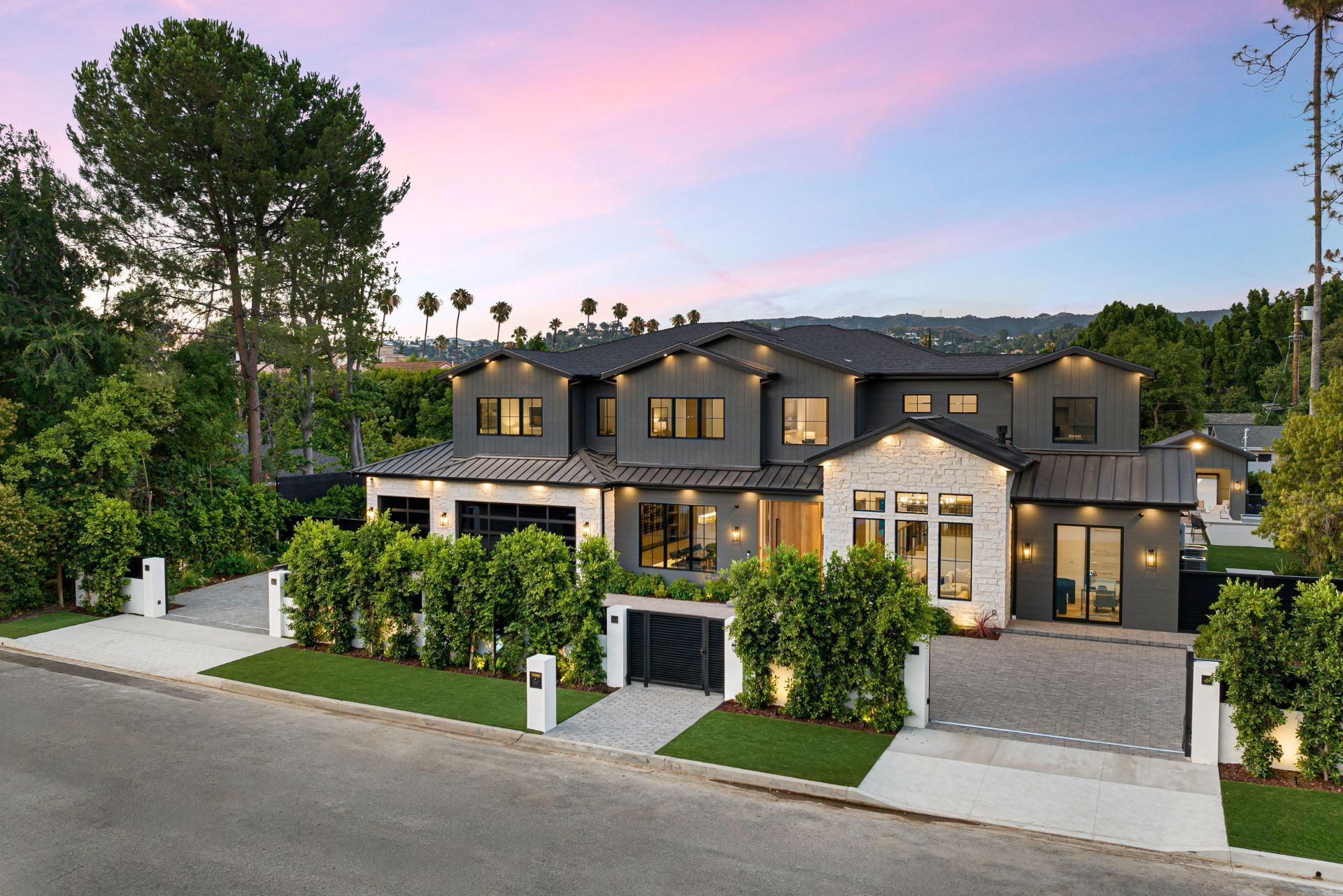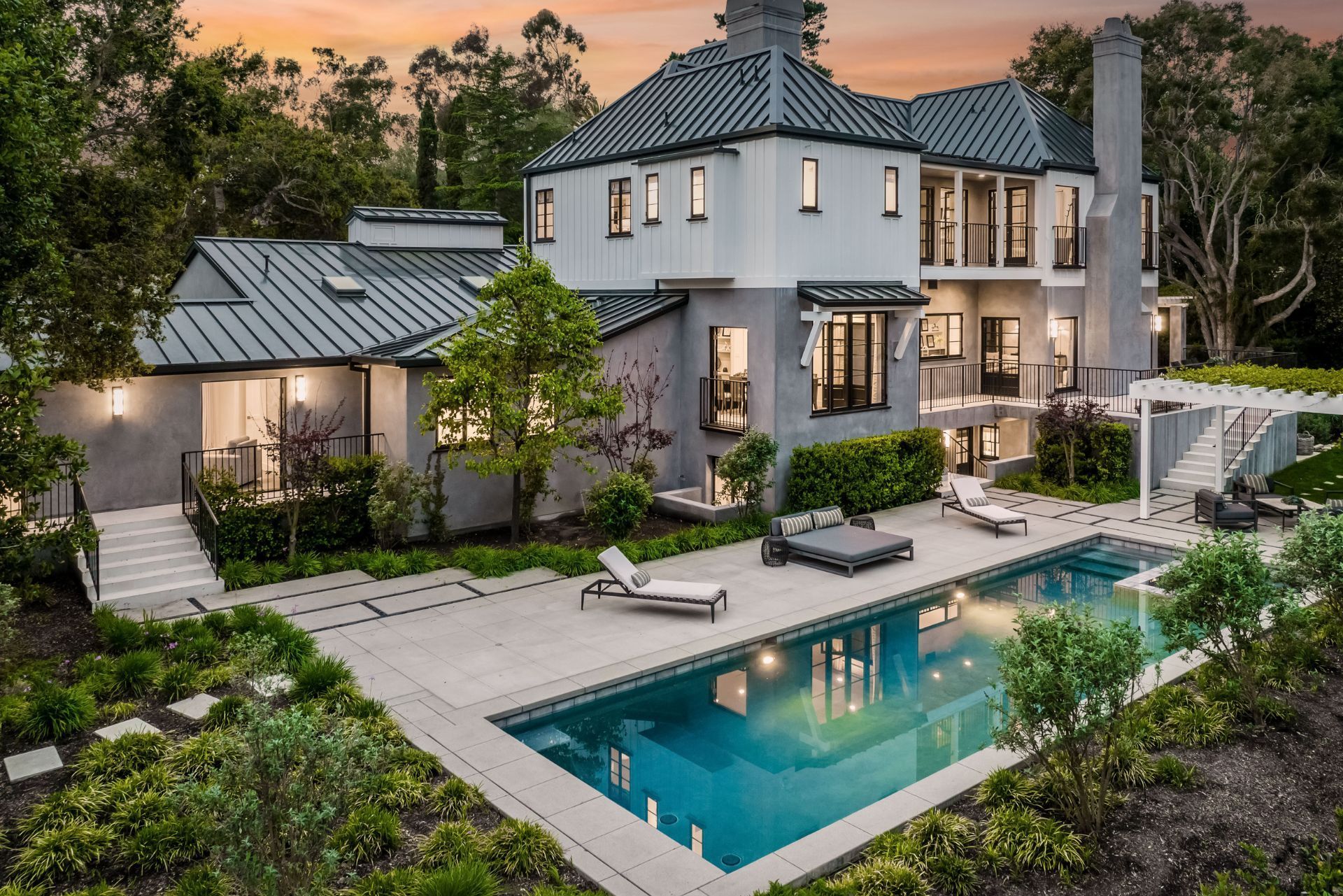Minnesota High-End Home Insurance

See How We're Different
or call us: (763) 242-1668
Common Personal Insurance Policies
By: Matt Larsen
Owner of Capstone Insurance Group & Umbrella Insurance Advisor
763-242-1668
Index
Understanding High-End Home Insurance in Minnesota
Key Coverage Components for Luxury Homes in Minnesota
Factors Influencing High-End Home Insurance Premiums in Minnesota
Choosing the Right Insurance Provider for Your Minnesota Luxury Home
Tips for Managing and Reducing High-End Home Insurance Costs
Common Challenges and How to Overcome Them
Conclusion: Protecting Your Minnesota Luxury Home with Confidence
Contact Us
Owning a luxury home in Minnesota comes with unique joys and responsibilities. From sprawling estates near the Twin Cities to lakefront properties in the Northwoods, high-end homes require specialized insurance coverage that reflects their value and distinct risks. Navigating the world of high-end home insurance in Minnesota can be complex, but understanding the essentials will help homeowners protect their investment effectively and with confidence.
Understanding High-End Home Insurance in Minnesota
High-end home insurance is not just about insuring a house; it’s about protecting a lifestyle. Luxury homes often feature custom architecture, high-value materials, extensive landscaping, and expensive personal belongings. These factors mean that standard homeowners insurance policies typically fall short in coverage.
In Minnesota, where weather extremes and unique environmental factors come into play, high-end insurance policies must be tailored to address specific risks such as severe winter storms, flooding, and potential property damage from natural events. For instance, the risk of ice dams forming on roofs during the winter months can lead to significant water damage if not properly addressed. High-end policies often include provisions for preventative measures, such as regular inspections and maintenance, which can mitigate these risks before they escalate into costly repairs.
What Qualifies as a High-End Home in Minnesota?
There is no universal definition, but generally, homes valued at $1 million or more fall into the high-end category. However, value alone isn’t the only consideration. Homes with luxury features such as custom finishes, smart home technology, extensive security systems, and unique architectural designs also require specialized insurance.
For example, a $900,000 home with a custom-built wine cellar, imported materials, and rare artwork may require coverage similar to a $1.5 million home without those features. Insurance providers often assess both the replacement cost and the unique characteristics of the home to determine the appropriate coverage. Additionally, the location of the home plays a crucial role; properties in affluent neighborhoods with higher risks of theft or vandalism may necessitate enhanced security measures and insurance options to safeguard against potential losses.
Why Standard Home Insurance Isn’t Enough
Standard homeowners insurance policies typically cover basic risks such as fire, theft, and liability up to certain limits. However, they often exclude or limit coverage for high-value items, custom features, and certain natural disasters common in Minnesota, such as flooding or ice dam damage.
For luxury homeowners, gaps in coverage can lead to significant out-of-pocket expenses. For instance, a standard policy might cover a typical roof replacement but not the cost of restoring a slate or copper roof, which can be tens of thousands of dollars more expensive. Furthermore, high-end home insurance often includes coverage for personal liability that extends beyond the home, protecting homeowners from potential lawsuits arising from incidents that occur on their property, such as injuries sustained during a social gathering or accidents involving guests. This added layer of protection is essential for those who frequently entertain or have high-profile guests, ensuring peace of mind in their luxurious living environment.

Key Coverage Components for Luxury Homes in Minnesota
High-end home insurance policies are designed to provide comprehensive protection tailored to the unique needs of luxury properties. Understanding these components helps homeowners ensure their coverage is adequate.
Dwelling Coverage: Replacement Cost vs. Market Value
Replacement cost coverage is critical for luxury homes. This coverage ensures that the insurer will pay to rebuild the home with materials and craftsmanship comparable to the original, regardless of market fluctuations. Market value, on the other hand, reflects the selling price of the home, which can be influenced by location and demand but may not cover rebuilding costs.
For example, rebuilding a custom Minnesota home with high-end finishes and energy-efficient systems can be significantly more expensive than the home’s market value. Replacement cost coverage protects homeowners from bearing this expense themselves. Additionally, luxury homes often feature unique architectural designs and custom installations that may not have readily available substitutes, further complicating the rebuilding process. Therefore, homeowners should work closely with their insurance agents to ensure that their dwelling coverage accurately reflects the true cost of rebuilding their specific property.
Personal Property Coverage for Valuables
Luxury homes often contain high-value personal property such as fine art, jewelry, antiques, and collectibles. Standard personal property limits may be insufficient to cover these items fully.
Many insurers offer scheduled personal property endorsements or floaters, which provide specific coverage for valuable items. Homeowners should have these items appraised and documented to ensure adequate coverage and smooth claims processing. Furthermore, it’s advisable for homeowners to periodically reassess their collections and update their insurance policies as values change over time. This proactive approach not only safeguards their investments but also provides peace of mind knowing that their cherished possessions are adequately protected against theft, damage, or loss.
Liability Protection and Umbrella Policies
High-end homeowners face increased liability risks due to the size of their properties, guest accommodations, and potential for accidents. Liability coverage protects against claims of bodily injury or property damage occurring on the property.
Given the higher risk exposure, many luxury homeowners opt for umbrella insurance policies, which provide additional liability limits beyond the standard policy. In Minnesota, where icy conditions can lead to slip-and-fall accidents, robust liability coverage is especially important. Moreover, luxury properties often feature amenities such as pools, hot tubs, or expansive outdoor spaces that can increase the likelihood of accidents. Therefore, homeowners should consider additional safety measures, such as installing non-slip surfaces and proper fencing, to mitigate risks and potentially lower their insurance premiums.
Additional Living Expenses and Loss of Use
In the event of a covered loss that renders the home uninhabitable, additional living expenses (ALE) coverage helps pay for temporary housing and related costs. For luxury homeowners, ALE coverage should reflect the cost of comparable accommodations, which can be substantially higher than average.
In Minnesota, where the winter months can be particularly harsh, having a robust ALE policy can be invaluable. Homeowners may need to secure temporary housing in upscale rentals or hotels, which can quickly add up. Additionally, some policies may cover the costs of meals and other living expenses incurred while the home is being repaired or rebuilt, ensuring that homeowners can maintain their lifestyle during a challenging time.
Specialized Coverages: Flood, Sewer Backup, and Earthquake
While Minnesota is not typically known for earthquakes, flooding and sewer backups are significant risks, especially in areas near lakes and rivers. Standard policies often exclude flood damage, so separate flood insurance through the National Flood Insurance Program (NFIP) or private insurers is necessary.
Similarly, sewer backup coverage is often an add-on that protects against damage from water backing up into the home’s plumbing system. Given Minnesota’s aging infrastructure in some areas, this coverage is advisable for luxury homeowners. Furthermore, homeowners should consider the specific geographical risks associated with their property, such as proximity to water bodies or historical flood zones, and consult with their insurance providers to tailor their coverage accordingly. This level of diligence not only enhances protection but also helps in making informed decisions about property investments and renovations, ensuring that the home remains a secure sanctuary for years to come.
Factors Influencing High-End Home Insurance Premiums in Minnesota
Understanding what drives insurance premiums helps homeowners make informed decisions and potentially reduce costs without sacrificing coverage quality.
Location and Environmental Risks
Homes located near the shores of Lake Minnetonka or in flood-prone areas of the Mississippi River basin may face higher premiums due to increased risk of water damage. Similarly, properties in rural northern Minnesota might see different risk assessments related to wildfire or winter storm damage. The geographical nuances of Minnesota, such as its diverse climate and topography, play a significant role in determining these risks. For example, areas that experience heavy snowfall can lead to ice damming and roof collapses, which insurers factor into their premium calculations. Additionally, the presence of nearby lakes and rivers can also influence the likelihood of natural disasters, prompting insurers to adjust their rates accordingly.
Home Construction and Materials
Luxury homes often use custom or imported materials that can be expensive to repair or replace. For instance, a home with a cedar shake roof or imported Italian marble flooring will have higher insurance costs than one with standard materials. Furthermore, the architectural style of a home can also impact premiums; unique designs that require specialized labor for repairs may lead to increased costs. High-end features such as expansive glass windows or intricate woodwork may enhance a home's aesthetic appeal but can also raise the risk of damage from severe weather, thus influencing insurance rates. Homeowners should consider these factors when selecting materials and designs, as they can significantly affect long-term insurance expenses.
Security and Safety Features
Advanced security systems, gated entrances, surveillance cameras, and fire suppression systems can help reduce premiums by mitigating risk. Insurers view these features as proactive measures that lower the likelihood of theft, vandalism, or fire damage. Additionally, the integration of smart home technology, such as smoke detectors that alert homeowners via smartphone or water leak detection systems, can further enhance safety and potentially lead to additional discounts on premiums. Homeowners are encouraged to regularly update and maintain these systems, as outdated technology may not provide the same level of protection or premium reduction. Investing in comprehensive safety features not only protects the property but also contributes to a more favorable insurance assessment.
Claims History and Credit Score
A homeowner’s claims history can impact premiums significantly. Multiple past claims may signal higher risk to insurers. Additionally, some insurers consider credit scores as part of their underwriting process, with better scores often leading to lower premiums. This practice stems from studies indicating a correlation between creditworthiness and the likelihood of filing claims. Homeowners aiming to secure the best rates should be mindful of their credit management, ensuring timely payments and minimizing debt. Furthermore, maintaining a clean claims history can be beneficial; homeowners might consider increasing their deductibles for minor incidents, as this can prevent small claims from affecting their overall risk profile. By proactively managing both their financial and claims histories, homeowners can position themselves favorably in the eyes of insurers.

Choosing the Right Insurance Provider for Your Minnesota Luxury Home
Not all insurance companies are equally equipped to handle the complexities of high-end home insurance. Selecting the right provider involves evaluating expertise, coverage options, and customer service.
Specialized Luxury Home Insurers
Some insurers specialize in high-net-worth clients and luxury properties, offering tailored policies that address unique risks and provide higher coverage limits. Examples include companies like Chubb, PURE Insurance, and AIG Private Client Group, which are known for their comprehensive luxury home insurance products. These providers often include additional benefits such as coverage for art collections, jewelry, and other valuable possessions, ensuring that your entire investment is protected under one umbrella. Moreover, they frequently offer risk management services, helping homeowners identify vulnerabilities and mitigate potential threats to their property.
Local Minnesota Insurers with Strong Reputation
Local insurers familiar with Minnesota’s specific risks can offer valuable insights and personalized service. Companies like Minnesota Mutual and Selective Insurance have established reputations in the region and can provide competitive luxury home insurance options. These local firms often have a deep understanding of the unique environmental challenges that Minnesota homeowners face, such as severe winter weather and flooding. This localized knowledge allows them to craft policies that not only meet state regulations but also cater to the specific needs of homeowners in different Minnesota communities, ensuring that coverage is both comprehensive and relevant.
Working with an Experienced Insurance Agent or Broker
An agent or broker who understands luxury home insurance can help navigate policy options, endorsements, and exclusions. They can also assist with risk assessments and recommend appropriate coverage levels based on the home’s unique features and location. Furthermore, a knowledgeable agent can provide insights into the claims process, ensuring that you are prepared in the event of a loss. They can also help you understand the nuances of policy language, making it easier to identify what is covered and what is not. This level of expertise is invaluable, particularly for luxury homeowners who may have specific needs that standard policies do not adequately address.
Tips for Managing and Reducing High-End Home Insurance Costs
While comprehensive coverage is essential, there are strategies to manage premiums without compromising protection.
Regular Home Maintenance and Risk Mitigation
Maintaining the home’s condition, such as clearing gutters, inspecting roofs, and servicing HVAC systems, reduces the likelihood of damage and claims. Installing storm shutters or reinforcing windows can also lower risk from severe weather.
Bundling Policies
Many insurers offer discounts when homeowners bundle their home insurance with auto or umbrella policies. Bundling can lead to significant savings while simplifying policy management.
Increasing Deductibles
Choosing a higher deductible can lower premiums, but homeowners should ensure they can afford the out-of-pocket expense in the event of a claim. For luxury homes, balancing deductible size with financial capacity is key.
Documenting Valuables and Updating Coverage
Regularly updating appraisals and inventories of high-value items ensures coverage limits remain adequate and prevents underinsurance. This practice also facilitates smoother claims processing.
Common Challenges and How to Overcome Them
Luxury homeowners in Minnesota may face several challenges when securing high-end home insurance, but awareness and preparation can help overcome these obstacles.
Appraisal and Valuation Disputes
Disagreements over replacement cost valuations can delay claims or lead to insufficient payouts. Working with qualified appraisers and maintaining detailed documentation helps prevent disputes.
Coverage Gaps and Exclusions
Standard policies may exclude certain risks or limit coverage for luxury features. Carefully reviewing policy terms and adding necessary endorsements or riders ensures comprehensive protection.
Claims Processing Complexity
Claims involving custom materials or high-value items can be more complex and time-consuming. Selecting insurers with dedicated claims teams experienced in luxury homes can streamline the process.
Conclusion: Protecting Your Minnesota Luxury Home with Confidence
High-end home insurance in Minnesota requires careful consideration of the home’s unique features, location, and risks. By understanding the key coverage components, factors influencing premiums, and the importance of working with specialized insurers, luxury homeowners can secure policies that protect their valuable investments and lifestyles.
Proactive risk management, regular updates to coverage, and collaboration with knowledgeable insurance professionals are essential steps toward comprehensive protection. With the right insurance in place, Minnesota luxury homeowners can enjoy their homes with peace of mind, knowing they are prepared for whatever challenges may arise.





